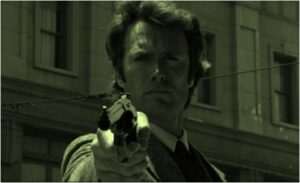The Point: While there are a gluttony of behaviors/actions you should be doing as a leader, we thought it would be interesting to take a typical Tip of the Spear contrarian view of what you should STOP doing as a leader. As such, the following seven (7) part series was developed based on executive coaching conversations had with leaders. In reviewing these leadership behaviors/actions, see if you see a little bit of yourself in the examples provided (No doubt you know several leaders besides yourself guilty)… Enjoy!
No…
As part of her leadership develop, Meredith was conducting a one-to-one (1:1) with one of her stakeholders (She was engaging in an executive coaching initiatives known as Stakeholder Centered Coaching, popularized by Marshall Goldsmith- Executive Coaching Guru). She asking for feedback regarding how she was improving on a specific behavior that she had chosen (The behavior was listening, before speaking). In requesting feedback, the methodology of Stakeholder Centered Coaching implores a leader to respond with a simple “Thank you” and nothing more, nothing less (Keep in mind asking follow-up questions to insure that the leader has the proper context/understanding is of course allowed). And then it happened…
It wasn’t that Meredith disagreed with the feedback received (She remembered fully being in the context described). But what she didn’t agree with was the perspective her stakeholder recalled the incident with. As such, Meredith responded with a “No, no, no! You’re not considering…” and she proceeded to tell her side of the episode.
While the rest of the conversation went on rather civilly, Meredith had lost this episode, and probably future ones as well with this stakeholder because of her incessant use of the word “No.” In leadership communication skills training sessions, I’ve instructed that while it’s only two-letters, the word “No” instantly tells the other party in your communication that they are wrong, and perhaps more strongly that they are stupid.
But…
On the heels of “No” and potentially quite as damaging is the use of “But” by a leader. In Part I of this series, we discussed at length the use of “But” and proper context/alternatives that should be leveraged instead. The word “But” also shares demeaning qualities, and is one of the great disengagement/trust busters in the workplace.
However…
Similarly, the word “However” could also be lumped in (and Meredith was good at using “However!”) Use of “However” shares that stakeholders while competent, aren’t nearly as competent nor as smart as you are as a leader. If you’re point is to speak down to stakeholders, then by all means use “No,” “But,” and “However” in your leadership speech patterns. I know of one leader that employs a type of “Swear Jar” operation in the workplace, whereby anytime these three words are uttered, the guilty have to drop $20 into it (Call is the “No, But, However Jar).
If your goal is to engage those around you, align them with your vision, and move to higher ground stop using these words. Replacing “No” with “Yes,” “But” with “And,” and “However” with “I See” will allow you to maintain proper focus on your task at hand, and not destroy relationships/future feedback cycles.
SUMMARY
So in this post we’ve covered not saying “No,” “But,” and “However” in conversing with stakeholders. Alternatives that foster communication, instead of shutting it down, have been presented in return. Whatever happened to Meredith and her desired behavior change to listen before speaking? Was she able to show growth/improvement in this area? After six (6) months of working together, we realized that old habits die hard!
Sincerely yours,
Sam Palazzolo
PS – You may also enjoy some of the other recent posts I wrote:
- The Leadership Challenge: Saying “Thank You”
- The Leadership Challenge: Are You Mindful?
- The Leadership Challenge: Are You Better Off Lucky Than Good?
- The Leadership Challenge: Can You Drive the Development of Leaders Who Transform Your Business?
- What’s Inside Your Leadership Time Capsule?
- The Leadership Challenge: 10 Characteristics to Develop Your Executive Presence
- The Leadership Challenge: Happy New Year! Now What?
- Leadership Amnesia: Should You Forget the Past to Move Forward to a Better Future?
- The Leadership Challenge: Are Your SMART Goals DUMB?
- The Leadership Challenge: Are You Climbing the Leadership Mountain?
- The Leadership Challenge: They Want You To Fail! 8 Leadership Tips to Overcome Failure
- The Leadership Challenge: Do You Exercise Your Moral Muscle?
- The Leadership Challenge: Conducting Post-Mortem Reviews
Sam Palazzolo is the Managing Director at Tip of the Spear Ventures, an agile Venture Capital and Business Advisory Services firm specializing in Executive Coaching, Leadership Development, and Communication Skills Training for Leaders.




